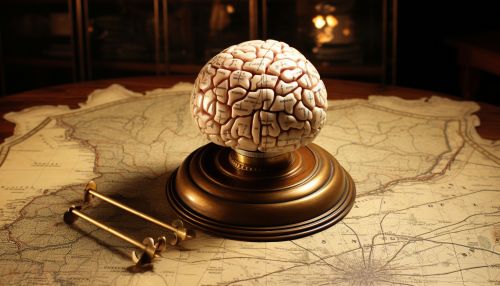Arcuate fasciculus
Anatomy
The arcuate fasciculus is a bundle of axons that forms part of the superior longitudinal fasciculus. It is a major white matter pathway in the human brain that connects two crucial areas for language processing: Broca's area and Wernicke's area. The arcuate fasciculus is found in the dominant cerebral hemisphere, which is the left hemisphere in about 95% of right-handed individuals and 70% of left-handed individuals.


Function
The arcuate fasciculus has been traditionally considered to be involved in language production, as it connects Broca's area, which is involved in speech production, with Wernicke's area, which is involved in language comprehension. However, recent research suggests that it may also play a role in other cognitive functions, such as working memory and attention.
Clinical significance
Damage to the arcuate fasciculus can result in language disorders such as conduction aphasia, in which individuals can comprehend language and speak fluently, but have difficulty repeating words or sentences. This condition is often caused by stroke, brain injury, or tumors.
Research
The arcuate fasciculus has been the subject of numerous research studies, which have used techniques such as diffusion tensor imaging to visualize its structure and function. These studies have provided valuable insights into the role of the arcuate fasciculus in language and other cognitive functions.
